Seeing how eagerly my fish eat Springtails prompted my interest in culturing Springtails for fish feeding.
Buy Springtails locally on Craigslist:
or buy Springtails on Amazon (paid link):
First, let's take a look at the fish feeding...
Here I drop live Springtails into an aquarium.
Live Springtails don't sink.
Springtails walk on the water’s surface and they can jump very high.
So, live Springtails are suitable only for top feeding fish - Guppies, Endlers and such.
Small size and high nutrition value makes Springtails the perfect live food for fry and small fish.
And it is very simple to culture Springtails.
Let's do it.
Originally, I had Springtails in a culture of Grindal worms on top soil.
In my already published follow up experiment, I learned that Springtails do fine in Peat moss as well.
You can use either top soil or Peat moss to culture Springtails.
But first you have to sterilize the peat moss to kill any live insects and their eggs.
Here is an egg of some insect...
So, let's put Peat moss in a plastic container where I intend to culture Springtails.
And heat it all for up to 5 minutes in a microwave.
More than 5 minutes in a microwave may melt the plastic and set the Peat moss on fire.
For that reason, I prefer to sterilize Peat moss by boiling or baking it.
Let the Peat moss cool down to room temperature.
Here I have enough sterilized Peat moss for two containers.
I fill up to 2/3 of the container with Peat moss.
Here is another egg - already cooked!
Springtails like moisture.
We have to make sure the Peat moss is moistened to keep Springtails in.
Let's add water.
Peat moss takes a lot of water.
Add as much water as it takes to make the Peat moss well moistened.
Poke needle sized holes in the cover of the container to allow air while reducing water evaporation.
Also, I prepare a piece of plastic to cover the Peat moss.
The piece of plastic serves to reduce evaporation and helps to collect Springtails.
There are different ways to seed Springtails.
In this example, I use a piece of plastic from an old well established culture to move Springtails.
Here you can see Springtails crawl on the piece of plastic.
Shake Springtails off the piece of plastic into the new container.
Crush a flake of cereal on top for Springtails to feed on.
Put a piece of plastic on top and cover the container.
That is one way to seed the culture.
Another, more efficient way to seed a new culture is by splitting the old well established culture.
Here you can see one of my old Springtails cultures.
Let's split it to make two new cultures.
The first thing you have to prepare is the container.
Make needle sized holes in the cover.
Fill up up to 1/2 of the new container with sterilized Peat moss.
Now let's move half of the Peat moss from the old container to the new container.
The old Peat moss comes with Springtails of all ages ready to reproduce.
This way we can split the well established culture of Springtails into a number of containers.
Let's split the remaining old Peat moss evenly among all 3 containers.
Keep in mind that Springtails, as small as they are, jump very high.
So, cover the container as soon as you finish with it.
All set and ready on October 16th, 2021.
I feed Springtails with cereal flakes.
The more Springtails in the culture, the more food you have to provide.
Initially, I crush a cereal flake in each box of new culture.
Spray it with water and close the containers.
Check on the Springtail cultures every day.
Make sure the Peat moss is moistened.
The first day the food is not touched at all as you can see here.
Feed Springtails only if the food is gone.
The following day, I notice mold growing on the food.
The Peat moss seems to be well moistened.
So, no need to moisten it and let's skip feeding today as well.
On October 20th, the mold spread out more and some of the food is gone.
6 days from the initial setup on October 22nd.
Almost all food and mold are gone.
Springtails are very active on the surface.
Looks like Springtails are finally asking for food after almost a week of fasting on the first feeding.
The next day some of the food is gone.
The mold is still visible.
Let's spray some water but skip feeding this time.
October 26th.
4 days since the previous feeding.
All food is gone.
And only few small patches of mold are left.
Feed each culture with a crushed flake of cereal.
And spray some water to keep it all moistened.
2 days later on October 28th.
In one of the containers, all the food and mold are gone.
Some food and mold remains in the other 3 containers.
Feed and spray water only in the container where food is gone.
4 days later on November 1st.
All food and almost all mold are gone.
Let's feed each culture half a cereal flake this time to see how fast it will go.
Two days later, on November 3rd, all food and mold is gone.
So, let's again feed a whole flake.
Two days later on November 5th, the food is almost gone.
There are some small patches of mold.
Let's feed Springtails and spray some water.
Two days later on November 7th.
You already may have noticed that mold grows only on uneaten food.
And it seems that mold is not the first choice of food for Springtails.
The next day November 8th.
I see only some patches of mold here and there as expected.
So again, it appears that mold is the secondary choice of food for Springtails.
That is something to keep in mind if you intend to use Springtails in terrariums as a bio active crew.
Let's skip forward a week or so.
Just remember to check on Springtails culture every day to keep it moist and feed if necessary.
Here I use a pipette to moisten the culture instead of spraying water.
It takes 2 - 6 weeks for different Springtails species to grow old enough for reproduction.
That's when the population of Springtails starts growing noticeably.
That is the time to feed fish I've been waiting for!
Gently pick up the piece of plastic from the top of the old culture and shake it in an empty container.
Here you can see dozens of Springtails landed in the empty container.
Springtails can crawl on the walls and they can jump very high when they are scared.
So you have to close the container as soon as possible to keep Springtails from escaping.
The same stands true for containers with Springtail cultures.
Feed, moisten, and always close it.
Regular feeding time is the best time to introduce any new food.
My Endlers are already familiar with Springtails - you have seen them eating Springtails at the beginning of the video.
Nevertheless, let's feed fish again.
Shake Springtails out of the container into the aquarium.
Feeding your pet fish is one of the most fun parts of the fish keeping hobby.
And Springtails are one of the best live fish foods everyone can culture at home.
I have more to share with you about Springtails in future videos.
Have fun and happy Springtails culturing :)



































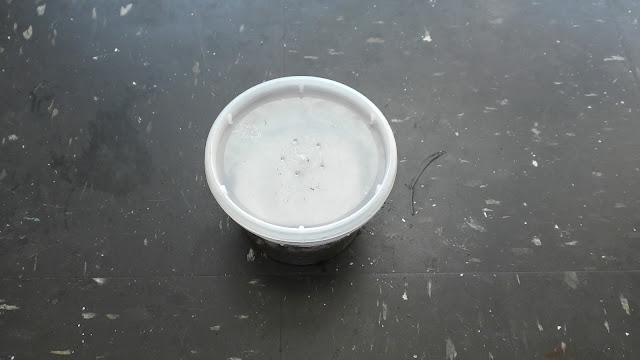










































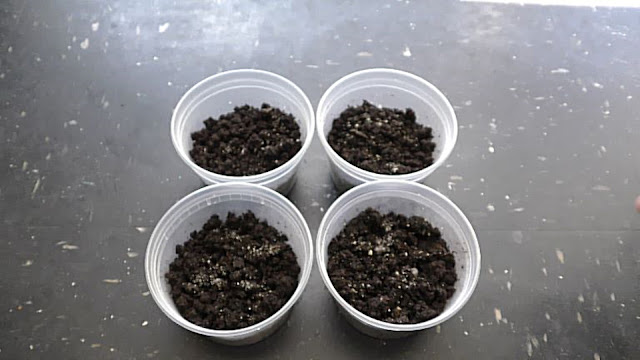


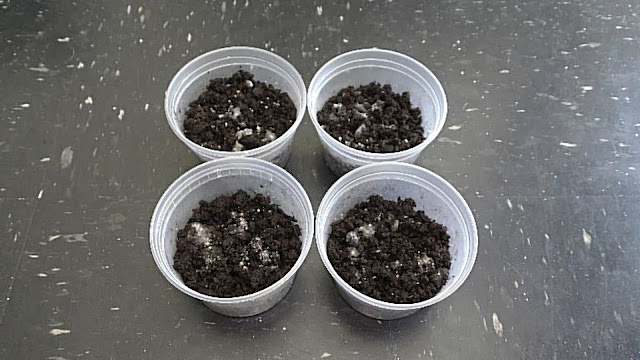




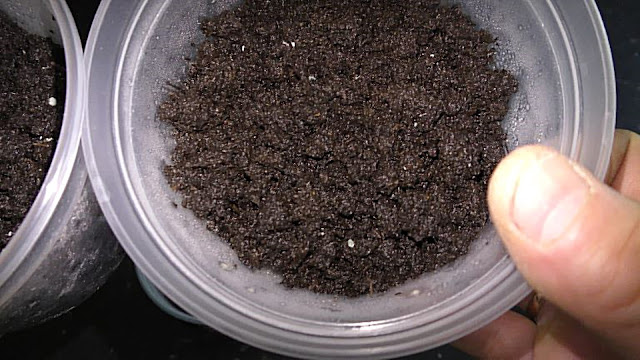






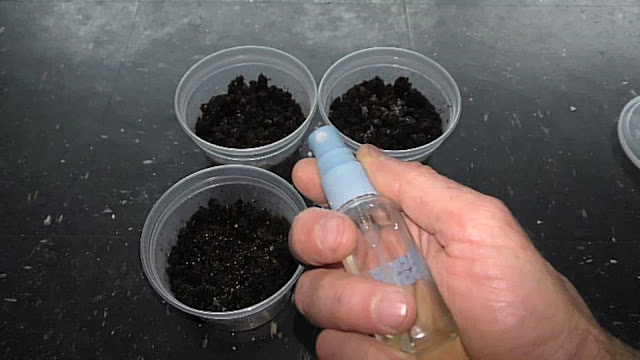







































































No comments:
Post a Comment